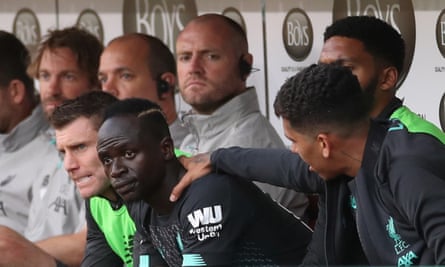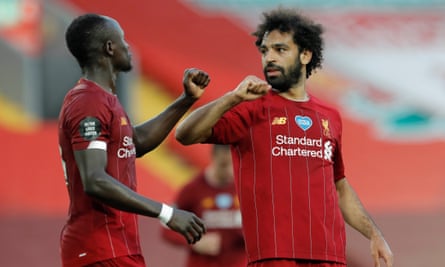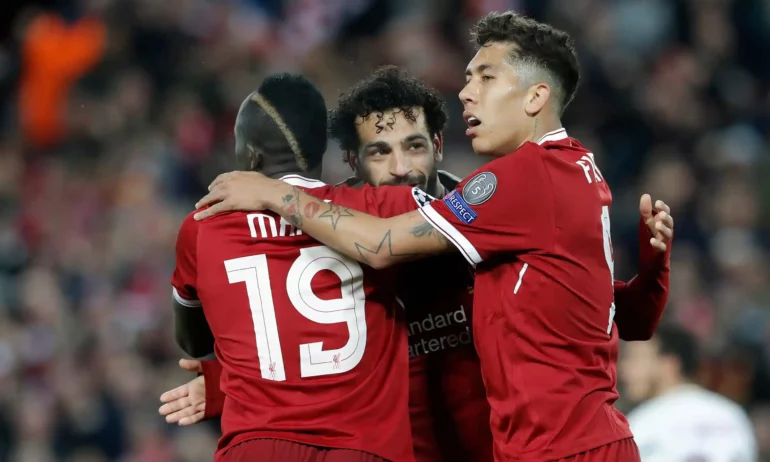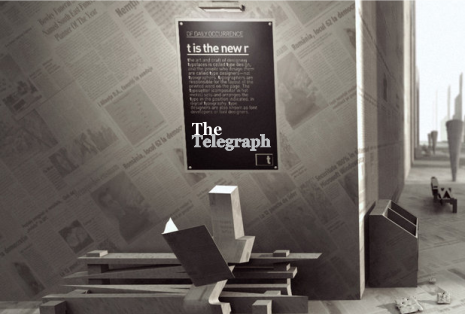Brazilian reveals in this extract from his new book the tension that could rear up between his former attacking colleagues
Why did I pull that face? I don’t really know. But it was funny, that’s for sure. To this day, memes still arrive on my phone or get sent to me on social media. We were in the tunnel, heading back to the dressing room after a convincing 3–0 victory against Burnley. The atmosphere was obviously tense. Despite the good result, the game had been marked by a burst of fury from Sadio Mané when he was substituted in the final minutes.
The cameras caught everything. Sadio wasn’t only angry about being subbed off: a little earlier Mohamed Salah had attempted a shot on goal when he had a clear pass on to Mané, who was free inside the box. Well, my English isn’t wonderful, so I can’t tell you exactly what Mané shouted when he came off. But it wasn’t anything nice! James Milner tried to calm him down, but Sadio remained furious, sitting fuming on the bench, gesturing repeatedly.
I knew those guys very well, maybe better than anyone. It was me out there on the field, right in the middle of them. I saw first-hand the looks, the grimaces, the body language, the dissatisfaction when one was mad at the other. I could feel it. I was the link between them in our attacking play and the firefighter in those moments. For many, that disagreement between Sadio and Mo was the first; for some, the first and last. But I knew it had been brewing since the previous season, 2018–19. My instinct and my duty was to defuse the situation between them. Pour water on the fire – never petrol.
Tense moments usually passed quickly. In the next game, one would be passing the ball to the other – or passing it to me, who would then pass it to the other – and we’d be celebrating another goal for our team. Together. Salah and Mané had had their little problems before, but that time everything happened on the field, there for the world to see. That day, at Burnley, the lid came off.

As we climbed the stairs coming off the field, the mood was heavy; there was none of the joy there should have been at another victory – our fourth in four Premier League games. And there I was again, in the middle of the two. Behind Salah and ahead of Mané in the tunnel, a camera looking right at us. When I saw it, I couldn’t help smiling, making a face that said something like: ‘Did you see that?! Things got heated between those guys today! Don’t worry, though. It’s nothing.’
Their argument wasn’t funny. Potentially, it could have caused problems for us. But that ironic face I made was the face of someone who knew it wouldn’t lead to anything serious. Maybe the Boss [Jürgen Klopp] and some others were worried. I wasn’t! I think the Liverpool fans, seeing my reaction, had a laugh, put their worries aside, and went to celebrate another victory with their friends.
I don’t know if he was aware of it or not, but Salah used to frustrate everyone when he didn’t pass the ball. I knew how to handle that situation better than most. Klopp addressed this issue in front of all of us: when a teammate was in a better position, the ball had to be passed. It was a clear hint aimed at Salah. Over the years, I must say, this aspect of his game improved significantly. He gradually learned to be less selfish and more cooperative – notwithstanding the fact that he is a striker, a goalscorer, and every goalscorer tends to be a bit ‘greedy’ in the pursuit of a goal. That’s normal.
Mané was more intense in both good and bad moments. He was the most explosive of the three of us and he was also the person with whom I had the most freedom to discuss this issue. I was always talking to him, giving advice, trying to calm him down. I would tell him to find peace, play for the team, and stay relaxed.
They were never best friends; each kept himself to himself. It was rare to see the two of them talking and I’m not sure if that had to do with the Egypt–Senegal rivalry in African competitions. I truly don’t know. But they also never stopped talking, never severed ties. They always acted with the utmost professionalism.

I never took sides. That’s why they love me: I always passed the ball to both; my preference was for the team’s victory. Many focus on what I brought to the attacking trio in tactical terms, but perhaps just as important was the human element: my role as peacemaker, unifier. If I didn’t do that, it would be nothing but storms between the two of them on the field.
Maybe that’s why I was the one most often substituted by Klopp. The three of us had very different personalities and the Boss knew I wouldn’t throw a bottle to the ground or anything like that. If I was bothered, I’d talk to him privately afterwards. When a substitution was needed, it was easier to take Bobby off than to upset either of the other two.
Everyone, including the other players, knew that’s how it worked. It was the worst-kept secret in Liverpool – naturally, no one ever asked what I thought or how I felt. That’s just my nature; the team comes first. The Boss knew it.
I arrived in Liverpool in the summer of 2015. Sadio Mané joined the following year and, in 2017, it was Mohamed Salah’s turn. None of us knew what was going to unfold in the five years we played together. Klopp once said, ‘Not in my wildest dreams could I imagine that it would work out like that.’ In football, clubs are constantly searching for the same thing: victories and sometimes titles. They have huge teams of scouts, performance analysts and use advanced software, all in the pursuit of finding the formula for success. It’s a sport that moves billions of fans, a lot of money and many hearts. Everyone seeks maximum return with minimal investment. But, still, you never know.
Football is wonderful because it’s impossible to anticipate or predict the magic that will unfold on the field when a boy from Egypt meets another from Senegal and one from Brazil. Only God knows; no one else. Not even Mr Klopp.
First, I should clarify something. Some people talked about how it was to my credit that I gave the number 11 shirt to Mo Salah when he arrived at the club and that helped the whole thing start off on the right foot. It looked like a selfless gesture that, in the context of the story of the trio I formed with those guys, fitted my style of play.
I’ve always been seen as the most generous of the three, the attacker who did the dirty defensive work and played to make the duo shine in front of goal. It’s the perfect story, so very like me: Roberto Firmino, the nice the guy who relinquished the number he wore at the club and gave it to his newly arrived colleague.
Sorry, folks, but it wasn’t like that at all. Or rather, it wasn’t exactly like that. I simply decided to wear the number 9. It had been available since the previous season, after Christian Benteke’s departure, but it was only in that summer of 2017 that I thought I could transition from being a false 9 to becoming the actual number 9.
Being Liverpool’s number 9 is no small thing. It’s a historic shirt that has been worn by club idols like Robbie Fowler, Ian Rush and Fernando Torres. Perhaps it took me a little while to realize that.
I wore the number 10 in the youth categories and later, at Hoffenheim, I switched from 22 to 10 when I had the opportunity. For Brazilians, and almost everywhere else in the world, the number 10 is the shirt of the star player, the shirt Pelé immortalised. But the number 10 at Liverpool belonged to my friend Philippe Coutinho. The number 9, it’s true, has always been a coveted shirt for Brazilians, worn by Ronaldo, and I did like it even though I had never worn it before. Now the time had come.
This is an extract from Sí Señor: My Liverpool years by Roberto Firmino (Quercus, £22)


